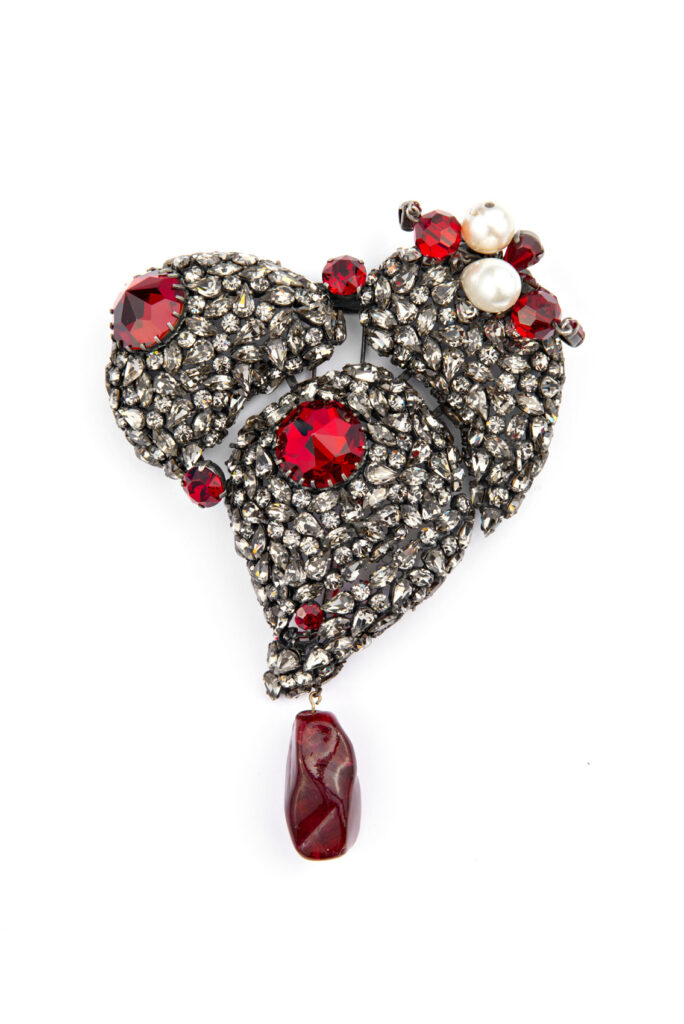Yves Saint Laurent at the museums

Throughout his time as a fashion designer, Yves Saint Laurent transposed his passion for art to his collections. Coinciding with the 60th anniversary of his first runway show, six institutions across Paris have staged several of his iconic art-inspired creations in dialogue with their permanent collections. From the iconic Mondrian dress (1965) at the Centre Pompidou to sun-dappled garden motifs inspired by Bonnard (2001) at the Musée d’Art Moderne – with additional visits to the Louvre, the Musée d’Orsay, the Musée Picasso and the Musée Yves Saint Laurent Paris – this ambitious undertaking delivers a dynamic visual tour through the couturier’s endless passion for art. Mouna Mekouar, who curated Yves Saint Laurent aux Musées along with Stephan Janson and Madison Cox, president of the Fondation Pierre Bergé-Yves Saint Laurent, offers an overview of the experience. Whether making all six stops or selecting a few, visitors will discover how, from one painterly interpretation to the next, his goal was always “emulation rather than imitation.”
How did the six biggest institutions in Paris come to say yes?
That’s the genius of Saint Laurent. If the Louvre said yes, if the Musée d’Orsay said yes, if the Centre Pompidou said yes, if the Musée d’Art Moderne de la Ville de Paris said yes, if the Musée Picasso said yes: that is the genius of Saint Laurent. It is because his work allowed this dialogue.
Can you speak about how Saint Laurent’s creations are in dialogue with the art around them?
The format is very original because we are in the permanent collection area. We are not in a temporary exhibition room. And to be part of the permanent collections is also to know how to dialogue with the past and how to make it current. To make sure that the public comes to the Apollon gallery to visit but also to discover the works of Saint Laurent and to find it very natural. It was therefore necessary to work with finesse, accuracy and with all the curators.
This is the first time that the six have shared the same exhibition around the same artist.
And he’s not an artist, he’s a designer. It allows for some accessibility and re-reading, especially. When you go to the permanent collections now, I hope that when you look at the dresses, of course you discover Saint Laurent, but it allows people to look at the paintings again.
In each museum, there is a different portrait of Monsieur Saint Laurent. Was this done on purpose?
Yes, it was deliberate and it’s something I really wanted to do, that in each museum, thanks to the portrait, you can already understand the theme that has been chosen. At the Centre Pompidou, the idea was to really show how Saint Laurent belongs to the 20th century and announces the 21st century. This photo by Jeanloup Sieff caused a scandal in 1971 and today it belongs to our vocabulary. At the Musée d’Art Moderne de la Ville de Paris, we put Warhol’s portrait, it’s the idea of colour. There is the Dufy room, the Matisse room, there is Jacquet… The goal was to evoke the colour in Saint Laurent. At the Musée d’Orsay, we put up this magnificent portrait, very little known and that I love, by Lord Snowdon, where we see Yves Saint Laurent in jeans and the water lilies in the background. Lord Snowdon did this portrait at the time Saint Laurent bought the Château Gabriel in Normandy and they painted the entire first floor with water lilies.
This exhibition has many layers. You can go in and look at the works at first glance, seeing only paintings and dresses. But it goes much deeper.
Yes, much more. In the Picasso Museum, they put the portrait of Irving Penn. Do you know Penn’s portrait of Picasso? They are similar. We wanted to put the two portraits side-by-side, but we couldn’t. In an exhibition, there must be several readings. There are at least five levels of reading for each object, and it allows everyone to find what they want.
Do you feel an omnipresent soul in his creations? Is there something magical about them?
What touched me the most was that when we thought up the project, it worked in theory. Intellectually everything worked, as in the Apollon Gallery where Saint Laurent was indeed interested in rock crystal. Visually on paper, everything worked. Afterwards, there remained the moment of the installation and to know if it will really work. Because it’s in the space, once you’re in the permanent collections, that you can tell whether it works or not. When I did the installation, I was overwhelmed when I realised how Saint Laurent managed to fit into every century. At the Centre Pompidou, you realise that he belongs to the 20th century naturally. At the Louvre, you get the impression that jackets have always been in the Galerie d’Apollon. When you go to see the Proust dresses and the tuxedos, you have the impression that it slips into the 19th century, as if all the women of the 19th century were wearing tuxedos.
Could there be other chapters?
Yes, but in other institutions. It would be an absolute dream to do this project with other museums and in other cities.
Do the museums exchange with each other or were you the link between them?
We were doing the coordination, but now what is very nice is that the staff of one museum goes to see the exhibitions of the others.
This interview has been lightly edited for clarity.



